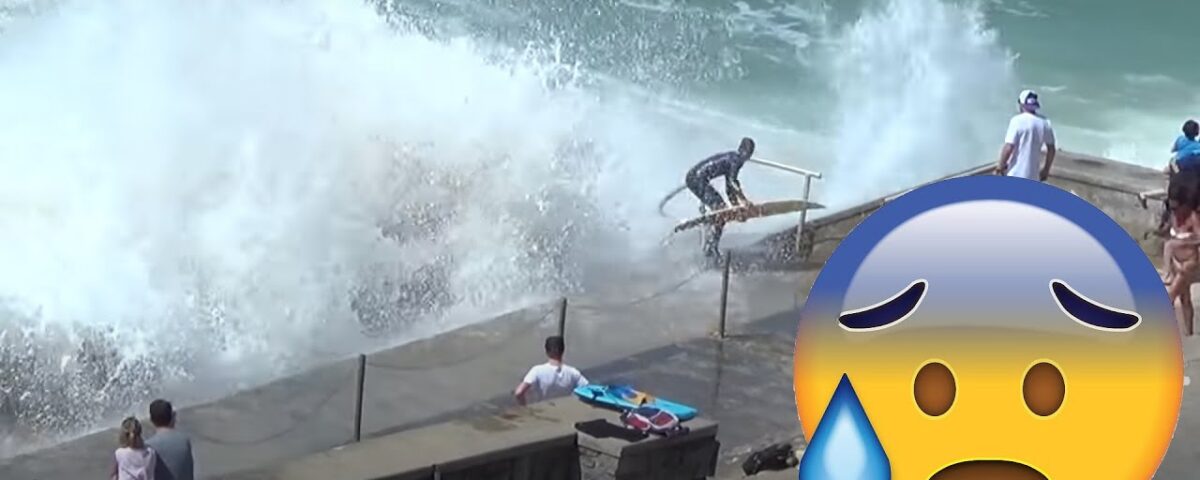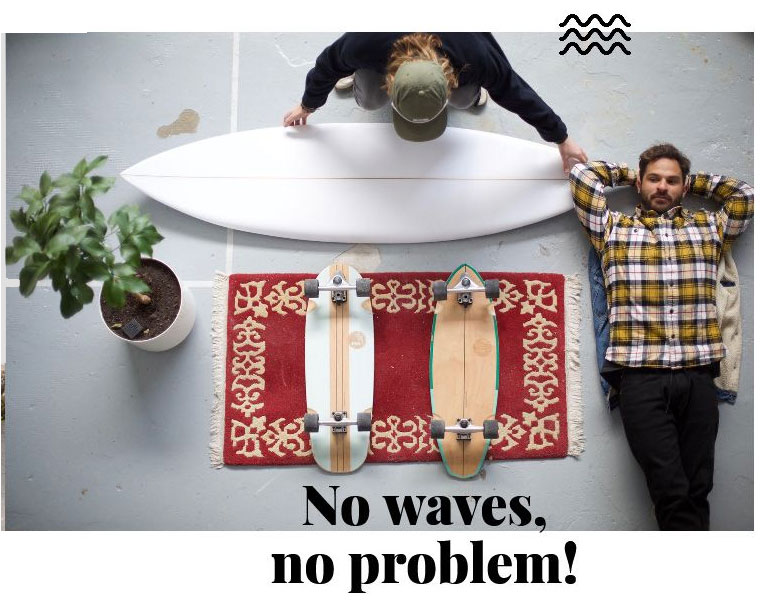
The Basque Coast in Biarritz: Stories and Secrets of this Jewel of the Basque Country

The Côte des Basques: Surf Paradise!
Like any water sport, surfing in Biarritz presents a number of risks, especially for beginners. To minimise these risks, beginner surfers are advised to take lessons with a certified surf school, keep a close eye on weather and ocean conditions, respect surfing priority and safety rules, and always stay within supervised swimming areas. Here are some potential dangers to bear in mind:
Contenus de la page
When should you take to the water on the côte des basques ?
At high tide, the exit, rather than the entrance, tends to trap surfers who are too tired from their session and prefer to take the risk of going over a staircase battered by the waves rather than heading towards Villa Belza to use the metal staircase provided. For beginners and those unfamiliar with the spot, we recommend surfing at low tide or taking surfing lessons.
Never hold a board by the leash!
he leash (or lanyard) is a safety strap attached to the surfer’s ankle and board. Its main purpose is to prevent the surfboard from moving away from the surfer after a fall. However, the leash is not a means of retaining the board.
If a surfer tries to hold a surfboard by the leash during a fall, the force of the wave can cause the board to come back towards the surfer at high speed, which can cause serious injury.
What’s more, the leash can get tangled around the surfer’s finger and increase the risk of it being ripped off.
For beginner surfers, it’s essential to learn how to handle a fall correctly to avoid injury and minimise risk. This includes how to fall off the board in a fall, how to protect your head and how to get back to the surface safely. These skills are usually taught during surf lessons with a qualified instructor.
Weather and ocean conditions: ocean currents
Ocean conditions can change rapidly, with bigger, more powerful waves that can take novice surfers by surprise.
Ocean currents can be very strong in Biarritz, particularly around the Côte des Basques and other popular surfing beaches. These currents can carry surfers away from the beach and make it difficult to get back to shore. It’s vital not to overestimate the surfing conditions if you don’t want to find yourself in trouble. It’s not the size of the waves that’s the problem, it’s your ability to stay underwater or be tossed about by the current without panicking. The best advice we can give you is to relax, surf and wait for help!
The areas without waves are often those with strong currents. Here you can see the risk of being close to someone who is panicking:
Rocks and seabed
Some surf spots in Biarritz have rocky bottoms, which can present a risk of injury, especially if you fall on them. At the Côte des Basques, for example, there are numerous rocks at the southern and northern ends of the beach.
Overcrowding
Biarritz is a very popular surf spot and can become very busy, especially in summer. This can increase the risk of collisions with other surfers. Here are a few basic rules to ensure respect and safety when surfing:
Observing each other
Respect for other surfers and people in the water is essential to guarantee everyone’s safety. Each surfer must take care not to get in the way of others in the water. This means avoiding catching a wave if someone else is already on it or preparing to catch it.
Controlling your board
It’s essential to stay in control of your surfboard at all times. You must hold your board with both hands and not let go when a wave arrives. Leaving a board adrift can put others in danger. But if there’s no one around, you can let go without any problem.
Respect the rules of priority: There are rules of priority in surfing to determine who has the right to catch a wave first. In general, priority goes to the person closest to the peak of the wave.
Stay alert: All surfers should be aware of their surroundings and other people in the water. It’s important to look around before catching a wave to make sure no-one is in your way.
Respect bathing areas: Bathing areas are often separated from surfing areas for everyone’s safety. Surfers must respect these zones to avoid injuring swimmers.
By respecting these rules and remaining vigilant, you’ll be helping to create a safe and respectful surfing environment for everyone.
Remember to hold onto your board with both hands and protect your face when you feel exposed!
Marine fauna
Although rare, there is a risk of interaction with marine life, including jellyfish, ‘live’ fish with a spiny backbone near the rocks and, very rarely, sharks. They are mostly seen late at night in bars :-).
It’s important to be vigilant so as not to hinder or injure others. So is holding your board with both hands and not letting go when the wave passes over you.
Which wave sizes are right for beginner surfers?
For beginners, it’s generally advisable to start on small, gentle waves, to familiarise yourself with the balance on the board and the timing required to get up. Waves of 1 to 2 feet (around 0.3 to 0.6 metres) are generally a good size to start with. These waves are generally gentle enough to allow beginners to practice without presenting too many difficulties.
It’s always worth taking surf lessons with a qualified instructor to get personalised advice on wave size and other factors depending on your level.
How can you protect yourself from the risk of drowning?
Surfing, like all water sports, presents a risk of drowning. Here are a few tips to minimise the risk:
- Know how to swim: This seems obvious, but it’s essential. Surfers should be good swimmers, able to swim at least 500 metres unaided.
- Know the conditions: It’s important to understand ocean conditions before getting in the water. This includes understanding currents, tides and weather. If conditions seem too difficult, it’s best not to get in the water.
- Surf in a supervised area: Surfing near a beach supervised by lifeguards can help ensure a rapid response in the event of a problem.
- Never surf alone: Surfing in the company of others ensures that help is nearby if you need it.
- Take lessons: Surfing lessons with a certified instructor can teach essential safety techniques, including how to fall safely, how to surface quickly and how to manage the board in waves.
- Respect your limits: Don’t attempt to ride waves or conditions that are beyond your skill level. It’s important to progress slowly and gain confidence and skill.
- Use the right equipment: Use a board appropriate to your skill level and make sure the leash (the safety cord that attaches the board to the surfer’s ankle) is in good condition.
- Knowing first aid: Knowing how to report a problem and how to react in the event of a problem can save lives. This includes knowing how to signal distress and how to react if you see someone else in trouble.
These measures can help reduce the risk of drowning when surfing. It is always advisable to take safety seriously and seek appropriate training and advice.





Eco-friendly sun creams to reduce our environmental impact
Read more